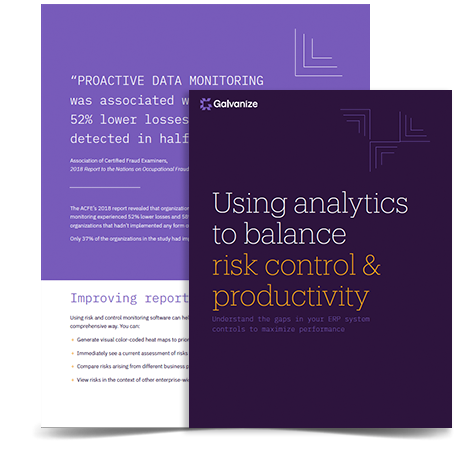RPA is commonly used in finance and control processes, but also has applications in the auditing space. Learn more about RPA and where it’s going next.
Recently, finance and accounting blogs and the Big Four publications have been full of references to robotics and robotic process automation (RPA). And it’s no wonder, as this EY eBook explains, the adoption of RPA in multiple business areas is only increasing.
The idea behind RPA is simple: get computers to perform repetitive tasks normally performed by humans, and cut resource and time requirements. This is a natural fit for accounting and finance, where processes usually involve massive volumes of similar transactions and activities.
I recall a government agency that, over 10 years ago, had a team of six clerical staff reviewing medical reimbursement claims for potential fraud. By using an automated monitoring system to check claims against pre-established rules, they managed to:
- Re-allocate 80% of staff to work on more productive tasks.
- Identify a higher rate of invalid claims.
The agency referred to this process as a form of continuous controls monitoring, though it has more in common with today’s RPA.
RPA and the overlapping worlds of auditors and financial control specialists
Many current examples of RPA are more focused on accounting processing (e.g., invoices and payables) than on controlling and auditing, but the forms of processing and analysis and “robotics” remain largely similar. So why is it that continuous auditing and continuous monitoring, while used with great success in a number of organizations, isn’t commonplace? Often it’s because it’s hard to get a grasp of the people and processes involved—not to mention a scarcity of skilled resources.
So what does that mean for RPA in finance and accounting? Well, Gartner argues that RPA is not the future, it’s now, and finance and accounting functions need to be better prepared for it.
Ernst & Young has projected that RPA will become an essential tool for finance and accounting functions to meet increased demands, cost efficiencies, and drive value creation.
RPA will overlap with automated auditing and transactional control monitoring Robotic transaction processing will naturally just expand into testing and analysis for compliance, as well as for risks.
RPA and the overlapping worlds of auditors and financial control specialists
Automated transaction testing and monitoring analytics will be pushed more broadly into the first and second lines of defense, which makes sense. After all, it’s the responsibility of business and finance managers to make sure that controls are implemented as part of effective risk management.
“RPA is already creating rapid change in traditional finance and control processes.”
Auditors need to act as advisors to their finance and control colleagues, so when RPA is implemented, it’s done in a smart and well-controlled way. At the same time, finance and control leaders need to make sure that they understand enough about RPA to fully prepare for managing the risks that automation entails.
eBook:
Using Analytics to Balance Risk and Control Productivity
You’ll learn:
- How to illuminate risks in finance and accounting systems
- 7 Performance Hacks to improve risk management and performance
- A Technology Buying Guide for risk and control management and analytic monitoring
- How to understand the gaps in your ERP Systems.








